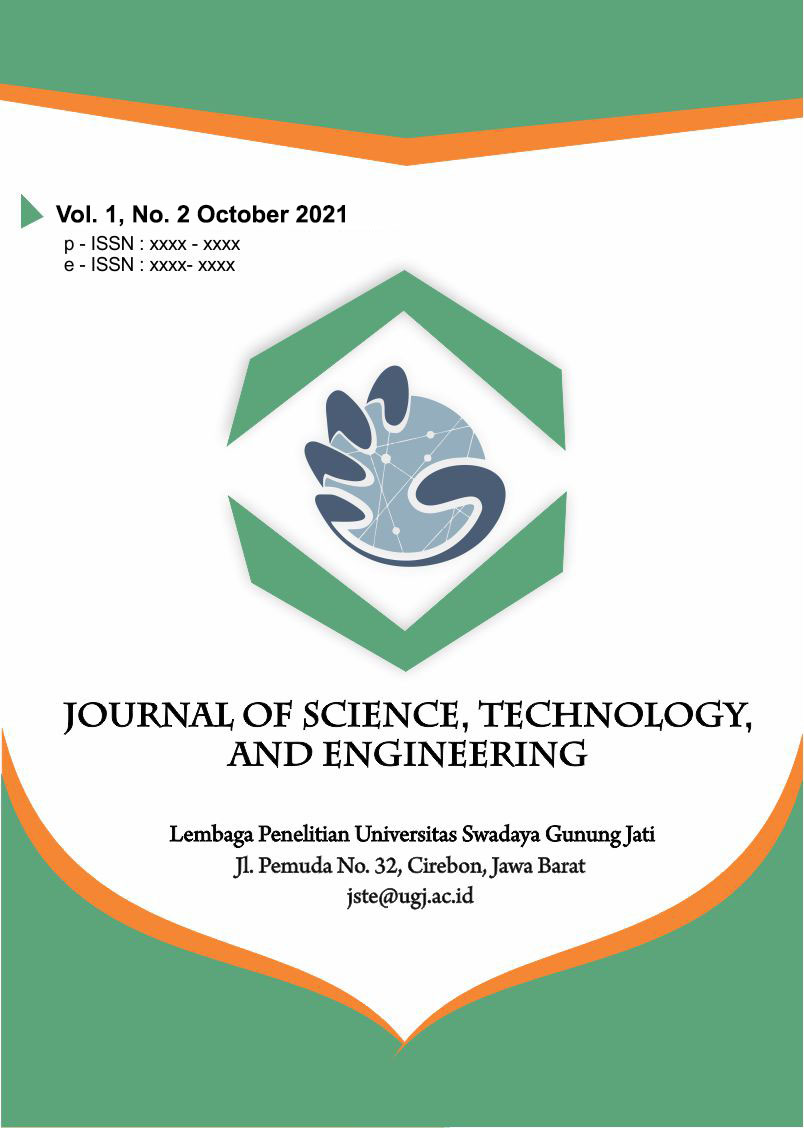Analysis of the Sentiment of Social Media Users to the Teacher's Room Using the K-Nearest Neighbor (K-NN) Algorithm
DOI:
https://doi.org/10.33603/jste.v1i2.6130Keywords:
Sentiment analysis, KNN (K-Nearest Neighbor), Social Media, RuangguruAbstract
This study was made to classify the KNN (K - Nearest Neighbor) algorithm in Twitter user sentiment analysis from Ruangguru in June during the pandemic 2020. Tweet data used were 700 Indonesian-language tweet data with the distribution of training data and test data using a combination of 80% - 20%. Using the KNN algorithm with TF-IDF word weighting, the sentiment values will be classified into two classes, positive and negative. From the test results it is known that the best accuracy value is 88.21% in the parameter value of k = 13, the highest precision is 70.98% in the parameter k = 15, the results of several tests show that the sentiment towards the Teacher's Roomin June tends to be positive.
References
Allahyari, M., Pouriyeh, S., Assefi, M., Safaei, S., Trippe, ED, Gutierrez, JB, & Kochut, K. (2017). A Brief Survey of Text Mining: Classification, Clustering and Extraction Techniques. http://arxiv.org/abs/1707.02919
Bibi, S. (2015). Effectiveness of Application of Blended Learning Algorithm and Programming Courses. 1, 274–286.
Dewi Onantya, I., Indriati., & Pandu Adikara, P. (2019). Sentiment Analysis in Reviews of Using BCA Mobile Applications. 3(3), 2575–2580.
Dewi Onantya, I., Indriati, I., & pand. (2019). Sentiment Analysis on BCA Mobile Application Reviews Using BM25 and Improved K-Nearest Neighbor. Journal of Information Technology and Computer Science Development, 3(3), 2575–2580.
Fauziah, S., Sulistyowati, DN, & Asra, T. (2019). Optimization of the Vector Space Model Algorithm with the K-Nearest Neighbor Algorithm in Searching for Journal Article Titles. Journal of Pilar Nusa Mandiri, 15(1), 21–26. https://doi.org/10.33480/pilar.v15i1.27
Karami, A. (2020). Twitter and Research : A Systematic Literature Review Through Text Mining. IEEE Access, 8, 67698–67717. https://doi.org/10.1109/ACCESS.2020.2983656
Mentari, ND, Fauzi, MA, & Muflikhah, L. (2018). Analysis of 2013 Curriculum Sentiment on Twitter Social Media Using 2013 Curriculum Sentiment Analysis on Twitter Social Media Using the K-Nearest Neighbor Method and Feature Selection Query Expansion Ranking. August.
Nofitri, R., & Irawati, N. (2019). Data Analysis Results Advantages Using Rapidminer Software. V(2), 199–204.
Nurjanah, WE, Perdana, RS, & Fauzi, MA (2017). Sentiment Analysis on Television Shows Based on Public Opinion on Twitter Social Media using the K-Nearest Neighbor Method and Sentiment Analysis on Television Shows Based on Public Opinion on Twitter Social Media using M. October.
Subhan, A., Sediyono, E., & Dwi, O. (2015). Ontology-Based Sentiment Analysis at Sentence Level to Measure Product Perception. 02, 84–97.
Downloads
Published
Issue
Section
Citation Check
License
Authors who publish with this journal agree to the following terms:
- Authors retain copyright and grant the journal right of first publication with the work simultaneously licensed under a Creative Commons Attribution License that allows others to share the work with an acknowledgement of the work's authorship and initial publication in this journal.
- Authors are able to enter into separate, additional contractual arrangements for the non-exclusive distribution of the journal's published version of the work (e.g., post it to an institutional repository or publish it in a book), with an acknowledgement of its initial publication in this journal.
- Authors are permitted and encouraged to post their work online (e.g., in institutional repositories or on their website) prior to and during the submission process, as it can lead to productive exchanges, as well as earlier and greater citation of published work.
JSTE (Journal of Science, Technology, and Engineering) is licensed under a Creative Commons Attribution-NonCommercial 4.0 International License.










